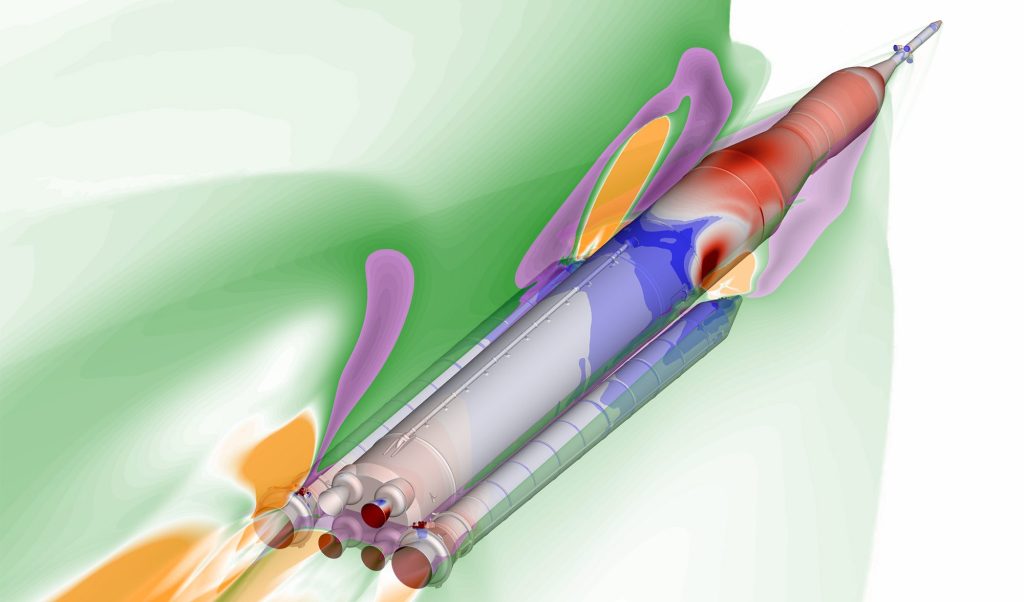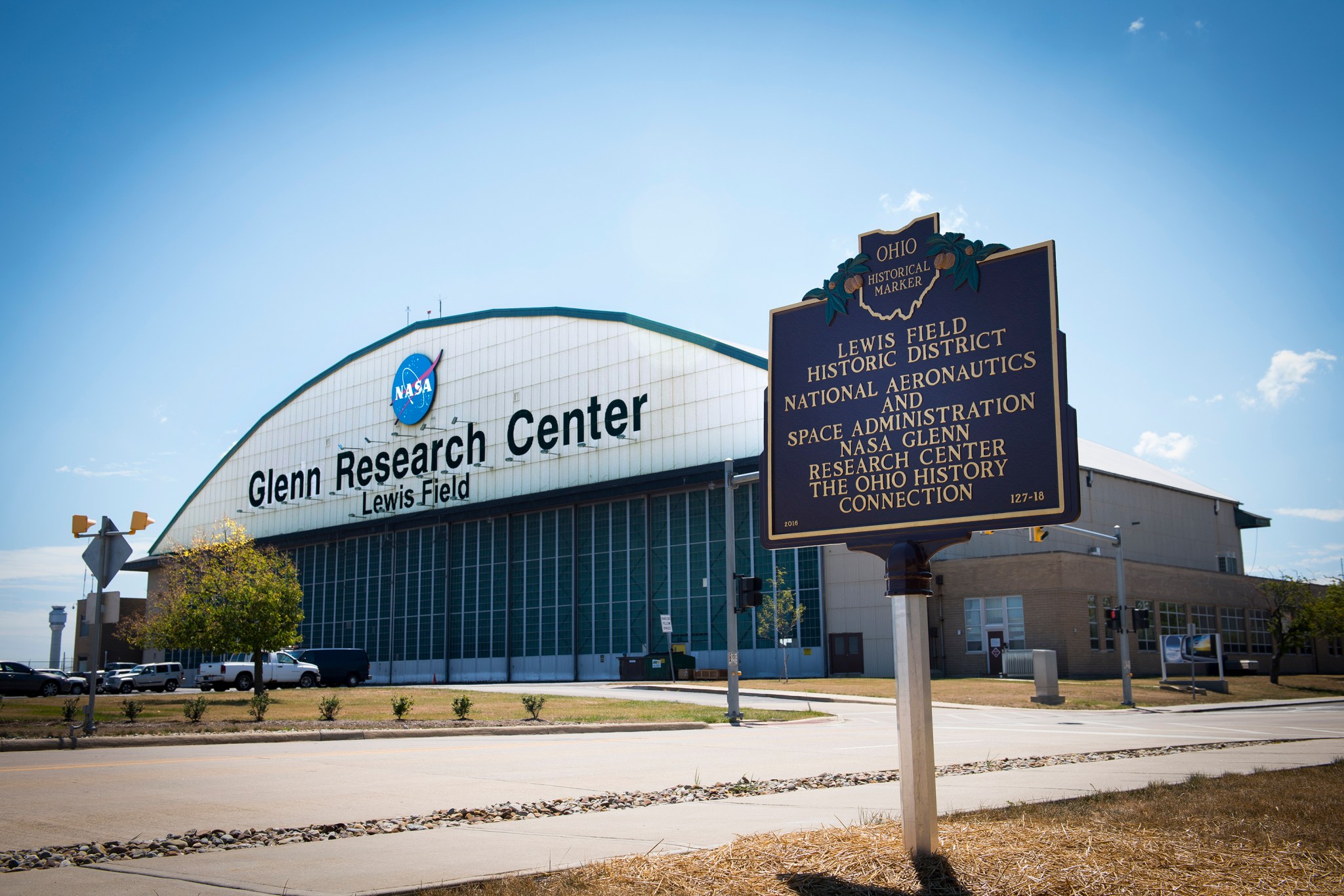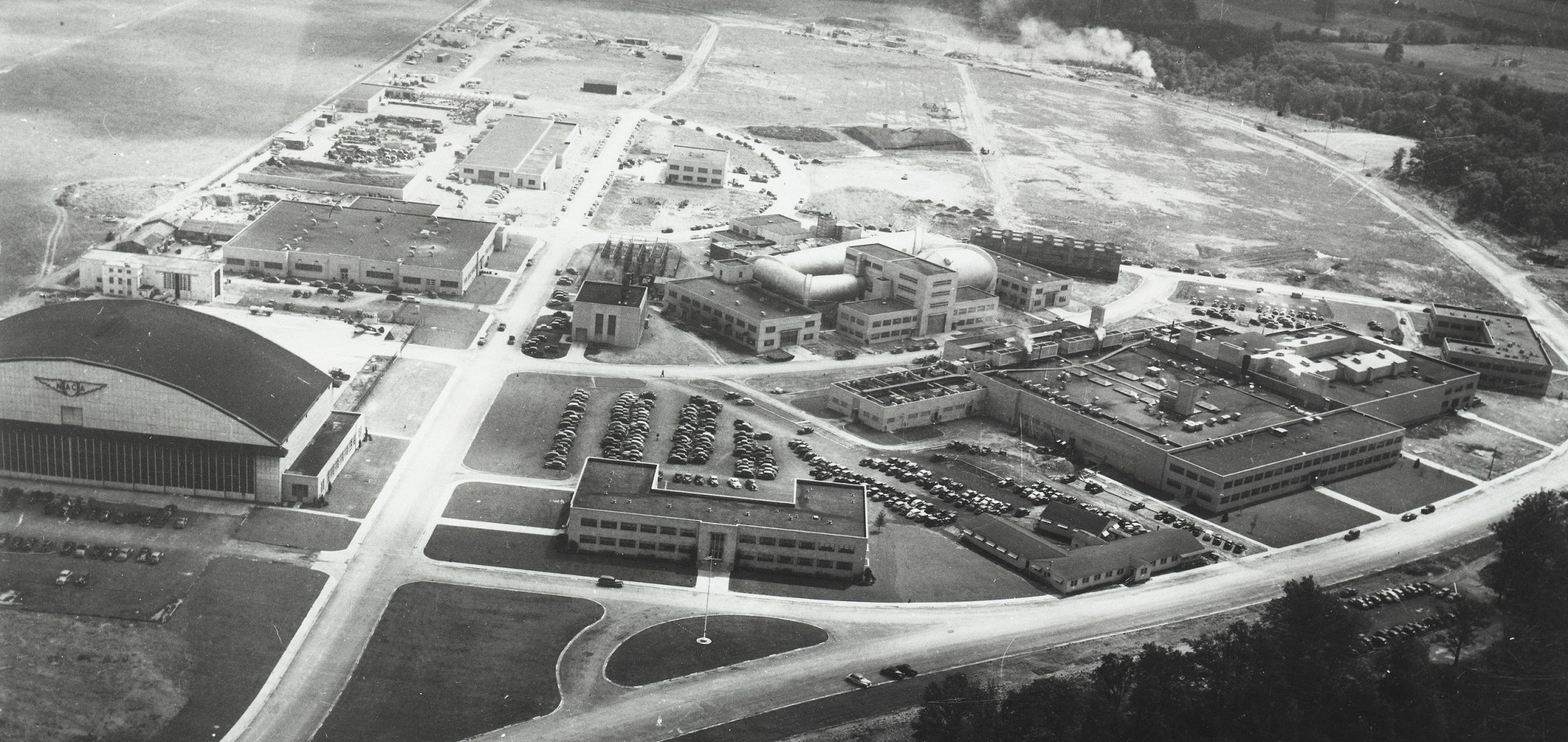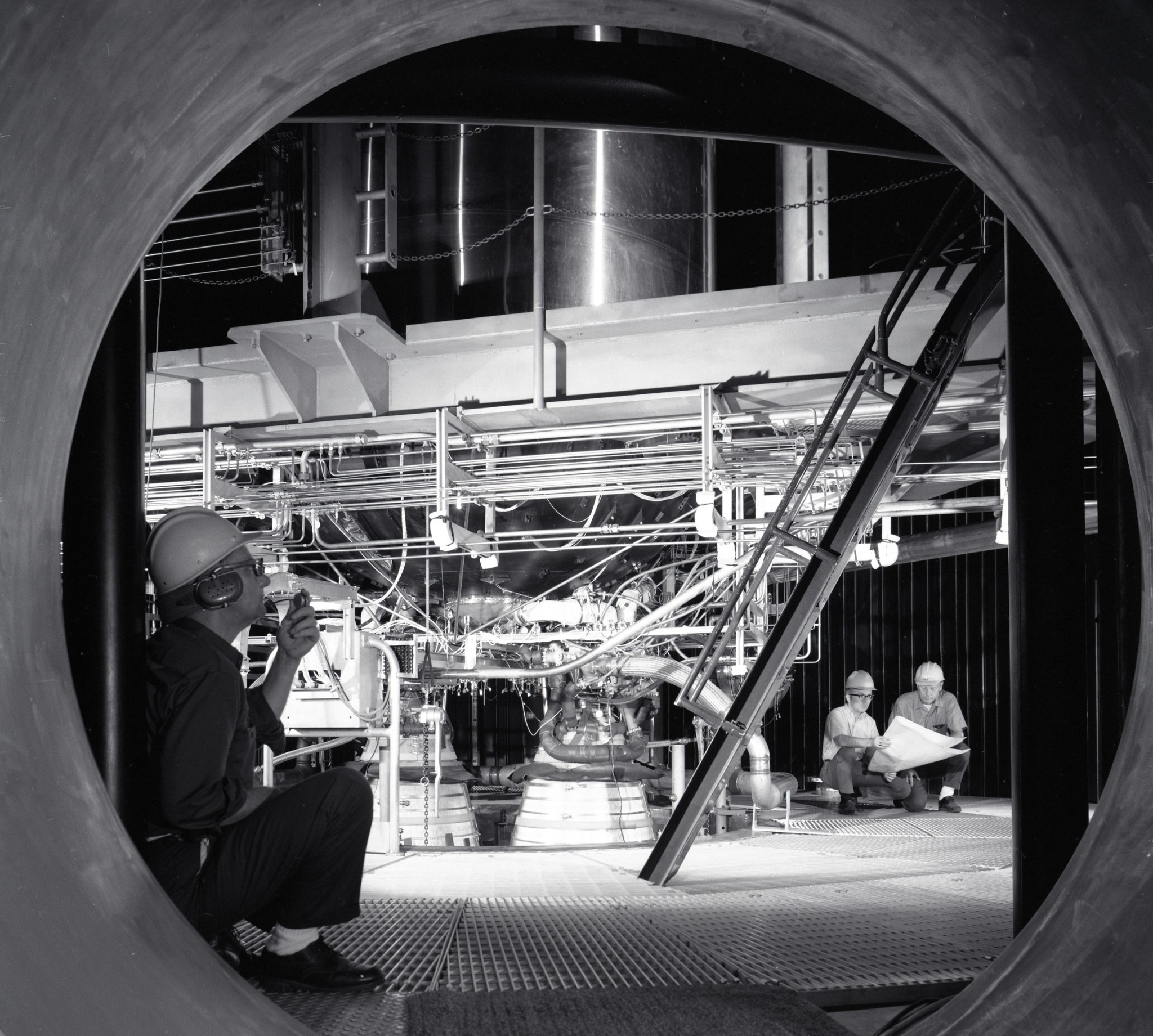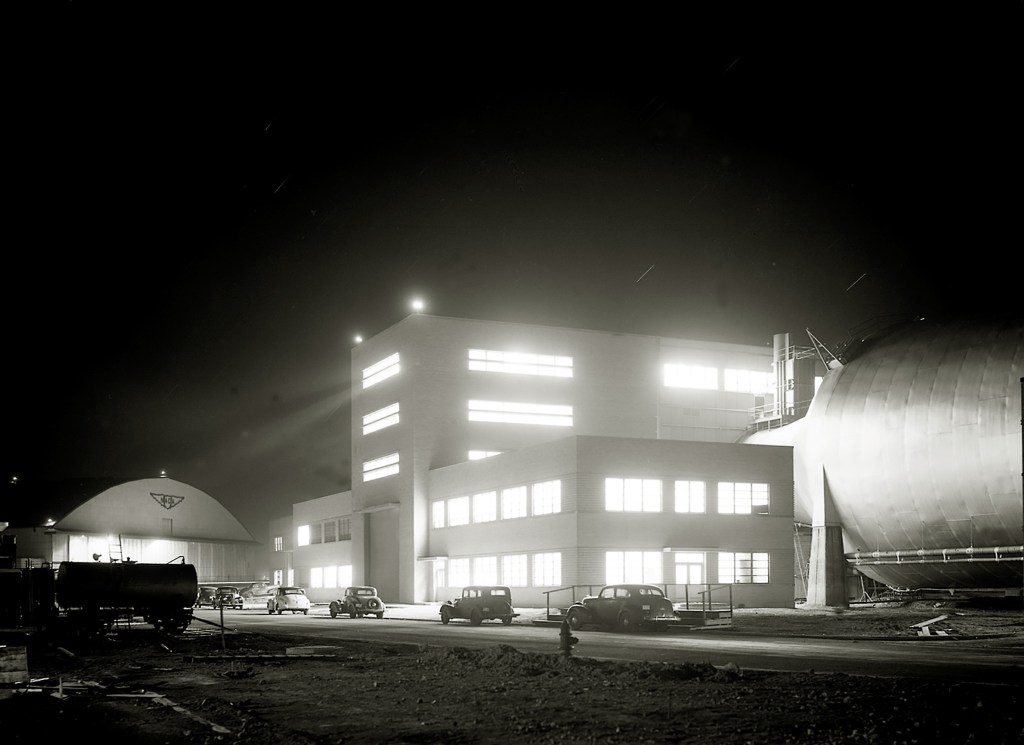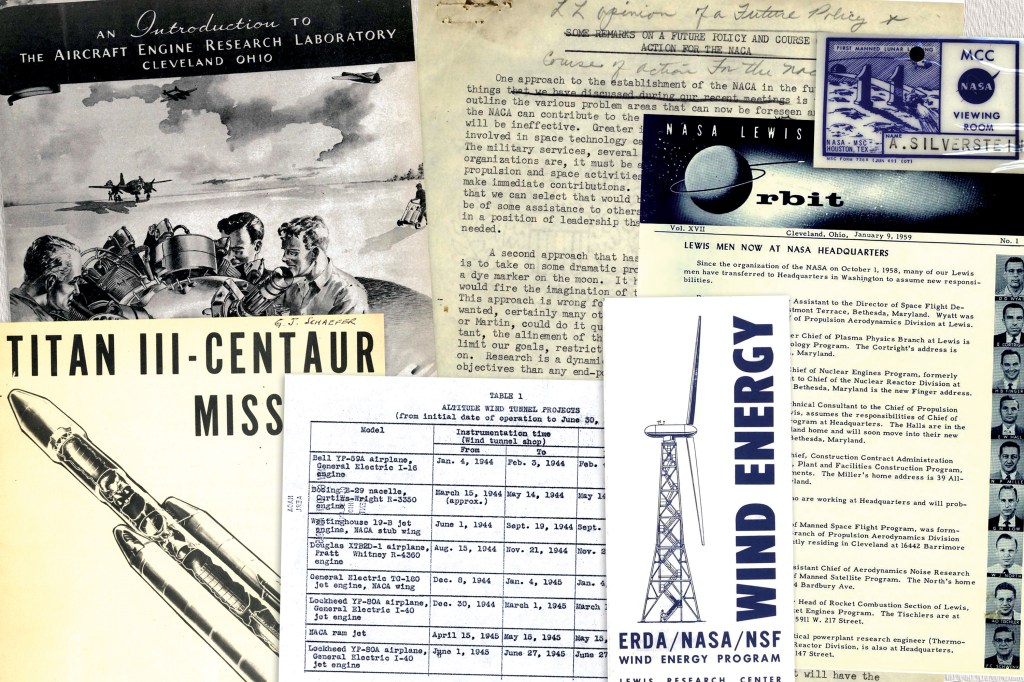Overview
Established in January 1941, NASA Glenn Research Center is one of the agency’s oldest centers. As such, it has possessed a number of historic facilities subject to the National Historic Preservation Act (NHPA) of 1966, the nation’s primary historic preservation law. The Act defines the legal responsibilities of Federal agencies for the management of historic properties. NASA Glenn has a Cultural Resources Manager delegated to ensure compliance with the NHPA and other regulatory drivers found within NASA Policy Requirements (NPR) 8510.1A.
National Historic Landmarks
Glenn actively utilizes a number of historic properties that are eligible for the National Register of Historic Places (NRHP) and has two current and one former National Historic Landmarks. The designation was part of the Man in Space ‒ A National Historic Landmark Theme Study in 1984 that named a number of NASA facilities across the country as National Historic Landmarks. The center has installed historic markers at the In-Space Propulsion Facility and the Zero Gravity Facility as part of historic mitigation efforts.
Glenn National Historic Landmarks:
- In-Space Propulsion Facility
- Zero Gravity Facility
- Rocket Engine Test Facility (site removed in 2003)
Historic District
In 2007, NASA Glenn initiated a Facilities Master Plan to renew its campus by removing older or under-utilized facilities and adding modern, sustainable buildings. In an effort to preserve to overall appearance of the campus, the center established the Lewis Field Historic District encompassing the center’s original footprint. A historical marker in front of the Administration Building was dedicated in October 2016.
- Lewis Field Historic District Map (2025)
- Historic District Open House Pamphlet (2016)
- NASA John H. Glenn Research Center: The Evolution of an Historic District video
- Historic District Walking Tour pamphlet (This self-guided tour is for those with Center access.)
Historic Mitigation Projects
NASA Glenn has demolished a number of historic facilities. Many of these sites were underutilized and no longer met mission requirements. Section 106 of the NHPA requires NASA to consult with the State Historic Preservation Office and other stakeholders on projects that may adversely impact historic properties. When a historic property is demolished, mitigation through documentation to record the history of these facilities is often undertaken. While physically absent from the center, NASA Glenn is proud to recognize the contributions of these facilities to the advancement of the nation’s aerospace research and technology and to disseminate that information to the public.
The documentation has included the collection of documents and audio/visual materials, conducting interviews with former employees, and performing photographic surveys of the sites prior to their demolition. The collected information is distilled into books, documentary videos, websites, exhibits, and Historic American Engineering Reports and made available to the public and NASA staff. These resources are available at the sites below.
Glenn Historic Facilities Websites
- Administration Building: The Administration Building was the base for center leadership for over 80 years and was the center’s primary meeting area and the main stop for visitors for many years.
- Altitude Wind Tunnel (AWT): The AWT played a significant role in the development of early U.S. jet engines. The tunnel was converted into large vacuum tanks in the 1960s to support the Centaur rocket program.
- Cyclotron: The Cyclotron Facility was built in the 1950s to study effects of radiation on materials for nuclear aircraft engines. Medical researchers later used the cyclotron to study the effect of fast neutrons on cancerous tumors.
- Plum Brook Reactor Facility (PBRF): The 60-MW reactor conducted over 70 experiments in support of NASA’s nuclear propulsion research, first for aircraft then rockets.
- Propulsion Systems Laboratory No. 1 and 2 (PSL): The original PSL was the NACA’s most powerful facility for testing full-scale aircraft engines at simulated flight altitudes. The facility was later used to study liquid rocket and larger jet engines.
- Rocket Engine Test Facility (RETF): The RETF was a National Historic Landmark which played an integral part in the development of high-energy liquid propellants.
- Rocket Laboratory: This facility was critical to the development of high-energy liquid propellants in the 1940s and 1950s and subsequently tested an array of thrusters, combustors and alternative fuels.
- Rocket Systems Area: The Rocket Systems Area included 11 different facilities to test turbopumps, engine components, and propellant tanks for liquid-hydrogen propulsion systems.
- Special Projects Laboratory (SPL): This facility, which was originally named the Jet Propulsion Static Laboratory (JPSL), made significant contributions to the center’s propulsion and materials research for over 70 years.















